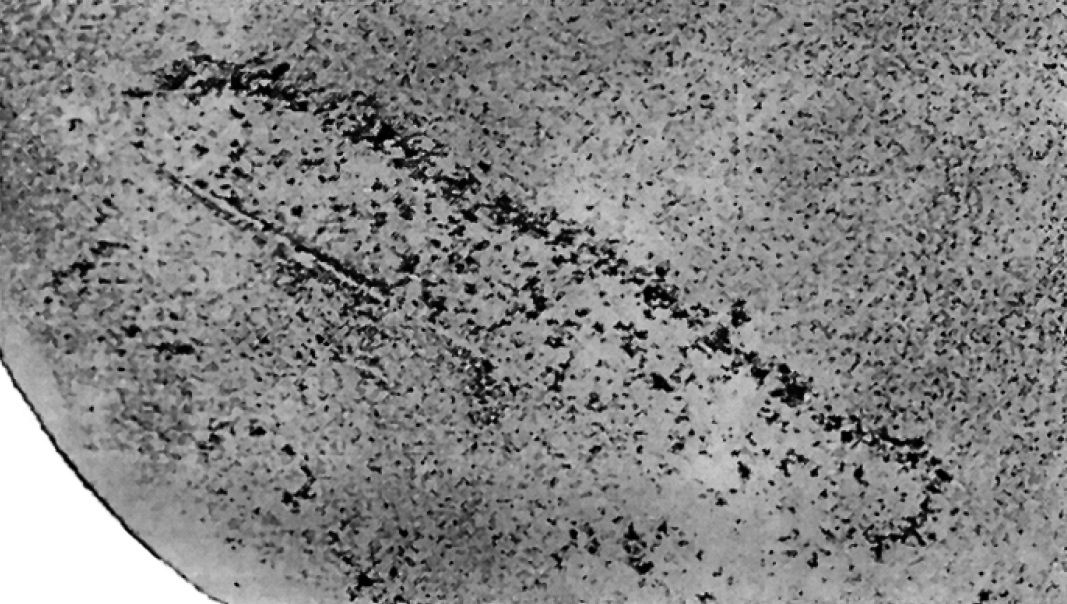
Alphabetical Index
Keyword Search
Casting Defects
Ingot Defects
Slab Defects
Drawing Defects
Forging Defects
Rolling Defects
Bearing Defects
Coating Defects
Corrosion defects
Fractography
Heat Treatment Defects
Machining Defects
Other Defects
Pipeline Defects
Polishing Defects
Rail Defects
Tool Steel Defects
Welding Defects
Internal Defects
Surface Defects
Internal + Surface Defects
Contact Us
Help
Home
4.7 t ingot made of 18Kh2N4VA steel - Ingot defects

Figure 1: 4.7 t ingot made of 18Kh2N4VA steel.

Figure 2: Dark shell in a 4.7 t ingot made of 18Kh2N4VA steel.
Defect name: No data.
Record No.: 3342
Type of defect (Internal/Surface): Surface
Defect classification: Ingot defects
Steel name: 18Kh2N4VA steel
Steel composition in weight %: No data.
Note: The problems related to improving the process of top casting of complexly alloyed and high.alloy
steels and alloys are considered. To increase the ingot surface quality and the ingot.to.product yield, a new
method of top casting of steels and alloys is proposed. In this method, a floating shield made of a light refrac.
tory material is placed in a mold and protects the mold surface against metal splashes.
The first experiments of casting 18Kh2N4VA steel
into 4.7 t ingots performed with this technique
showed that the ingot surface is defectless (Fig. 1) and
that a dark shell forms upon rolling (Fig. 2).
This shell results from the fact that some drops
stuck to the inner shield walls to form a shell during casting; this shell left the shield, penetrated into the
metal volume, and had no time to dissolve completely.
To remove this shell, we preliminarily deposited an
antistick coating made of a mixture of 85% graphite
and 15% clay onto the inner shield surface in order to
prevent sticking of metal drops to the inner shield sur.
face and their penetration into the ingot body, which
was supported upon rolling of ingots. No defects in the
ready products were detected.
Another advantage of this casting method consists
in the fact that the shield occupying the upper position
serves as an additional heat.insulating gasket that allows a metal to be held in the liquid state in the sink.
head for a longer time, which decreases the number of
shrinkage defects.
In conclusion, note that it was easy to implement
this technology of top casting of high.alloy steel into
a mold with a protective shield. This technology
makes it possible to produce ingots with a good sur.
face, which excludes the costs of its conditioning,
and the decrease in the heat removal from the head of the ingot leads to a decrease in the cutting losses by
3–5%.
Reference: Not shown in this demonstration version.